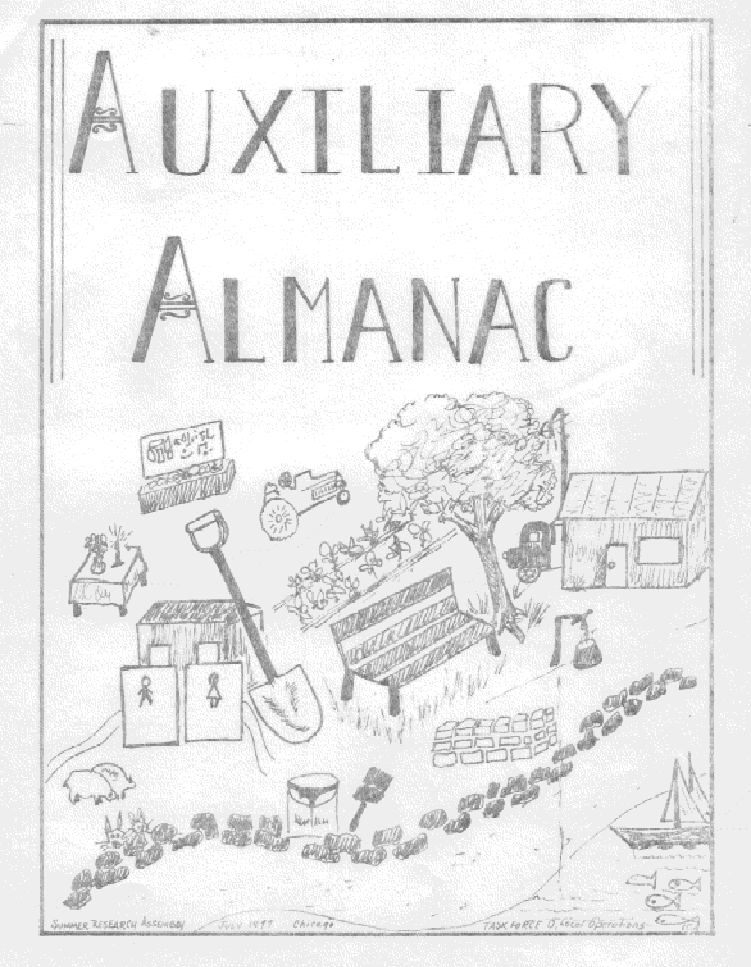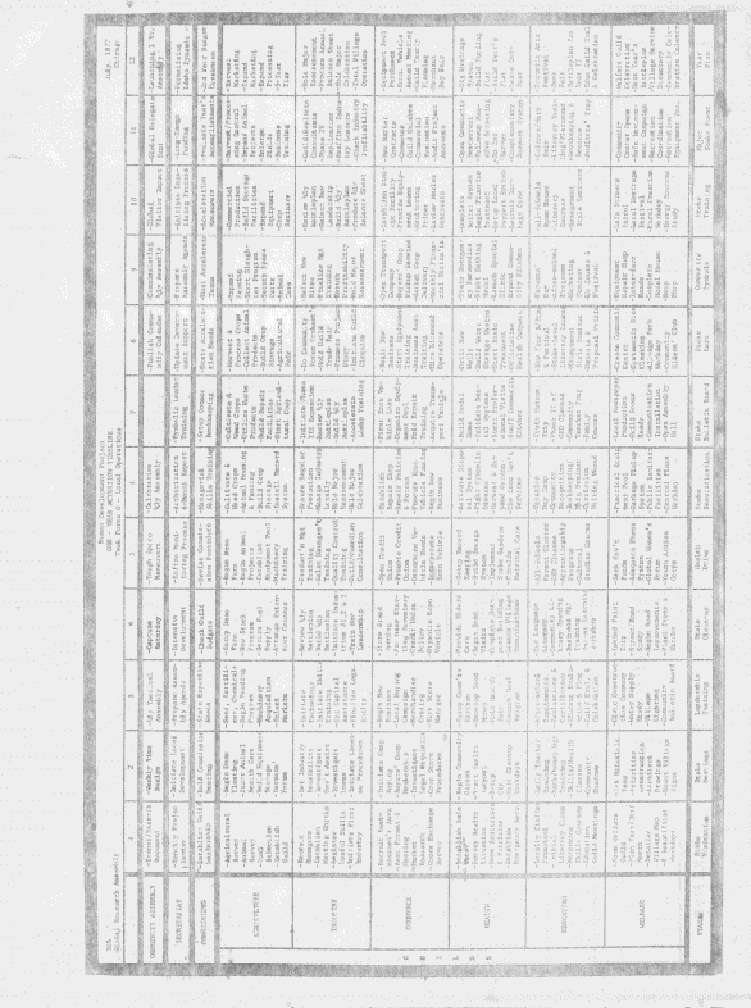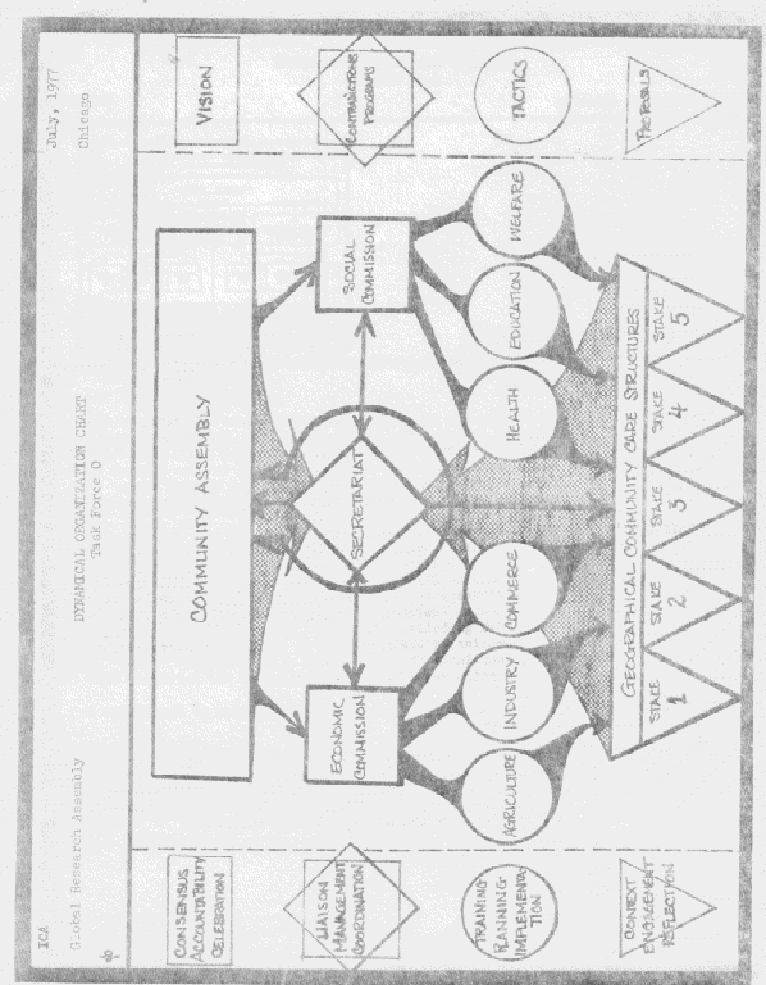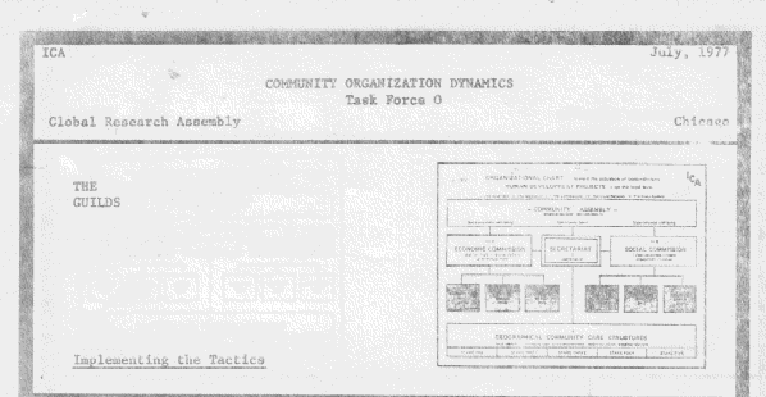
 |
ICA
Global Research Assembly
Chicago
July, 1977
The Auxiliary Almanac succeeds the '76 Implementing
Handbook as a compilation of current wisdom for use in doing Social
Demonstration. It is a symbol of our commonness as one Global
Social Demonstration across the globe and offers practical models
arising from corporate experience.
In order to provide a practical push for acceleration
and replication, Task Force "O" worked out of the image
of being in and out of a project in one year. The direction of
this document is therefore to intensify and "leap" what
we have already learned and to push ourselves into new accomplishment
in setup, actuation, and completion of the economic and
social arena.
The Almanac itself consists of a comprehensive oneyear
timeline, implementing methods and a new section on community
organization. The latter provides the framework which will enable
the local economic vehicle to succeed and the projects to become
selfsufficient. The work of the agriculture, industry, Commerce,
Health, Education, Living Environment and Community life Task
Forces will provide a complete set of operational models to implement
this document.
While this document will not answer all questions
in this new year, nor is it intended to be a substitute for the
initiative and innovation required in any project, we believe
it will supply the basic values, images, models and checklists
to forge our common operations around the world.
Copyright 1977 by THE INSTITUTE OF CULTURAL AFFAIRS
4750 North Sheridan Rd. Chicago, Ill. 60650, Phone:
312/7696363 Cable ICACHI
ICA
Task Force O
Global Research Assembly
July, 1977
This handbook deals with the local operations of
a Human Development Project. The following payee explain what
an Auxiliary does and when and how it gets done. It also speaks
of the style required of an Auxiliary to do the Job.
A Human Development project organizes manpower, time
and apace creatively. Knowhow is transferred from individual to
individual and from group to group. Behind the skills and organization,
however, ia a posture of confidence in one's capacity to influence
his destiny: a foundational confidence in the universe and life
itself. An Auxiliary demonstrates such confidence by altering
three realities: time, space and with then, style. The intensification
of a village's experience of time and the significating of its
space together create the confident and lively style of the new
village.
In relation to time, the Human Development Project
compresses ages of slow village evolution into a brief moment
of rapidlychanging images and traditions. Every minute bring
with a lifetime of decisionmaking. As one experiences the
changes in his village, he finds his own living changing, becoming
more pliable and better able to cope with the changes brought
on by the Twentieth Century. The Auxiliary orchestrates events
within a given time frame the way a choreographer orchestrates
a dance. People are motivated and community life ordered by the
design of events from the very special to the very mundane. Consider
an ordinary workday. Work rhythm, arrangement of forces, shifts
of location, celebrations and refreshments are components which
can be orchestrated into a miserable, difficult grind or an extravaganza.
The difference is in turning everything-setup, equipment
procurement and recruitment into one seductive dance. And
the secret is timing.
Everyone knows, and often forgets, that space i 1
s the stage on which life events are dramatized. People are what
give any space its significance. In renewing a village, residents
must be able to imagine living in the new space. Always look for
massive, visible environmental improvements which can be done
quickly. Use of physical models, architectural renderings and
so forth allow people to walk around projected new space in their
imaginations, even before the changes have taken place.
Care of personal and corporate space, or the lack
thereof' reflects and symbolizes the attitude of people toward
the whole of life. Abused space manifests the selfimage
of abused People. Clean and safe streets and roads, continuous
trash removal, paving, landscaping and node and park creation
take possession cf space people have been deprived of, giving
a sense of responsibility and care for the entire community..
Much has been said of the catalytic style of the
Auxiliary. Whatever else that may mean, it is at least clear that
part of the task of the Auxiliary is to entice the community,
with all its extended relationships, into participating in its
destiny through the Project. This means making participation so
available and attractive that people want to be a part of it.
Reflection upon that participation and its genuine influence on
the community breeds motivation over and over again.


